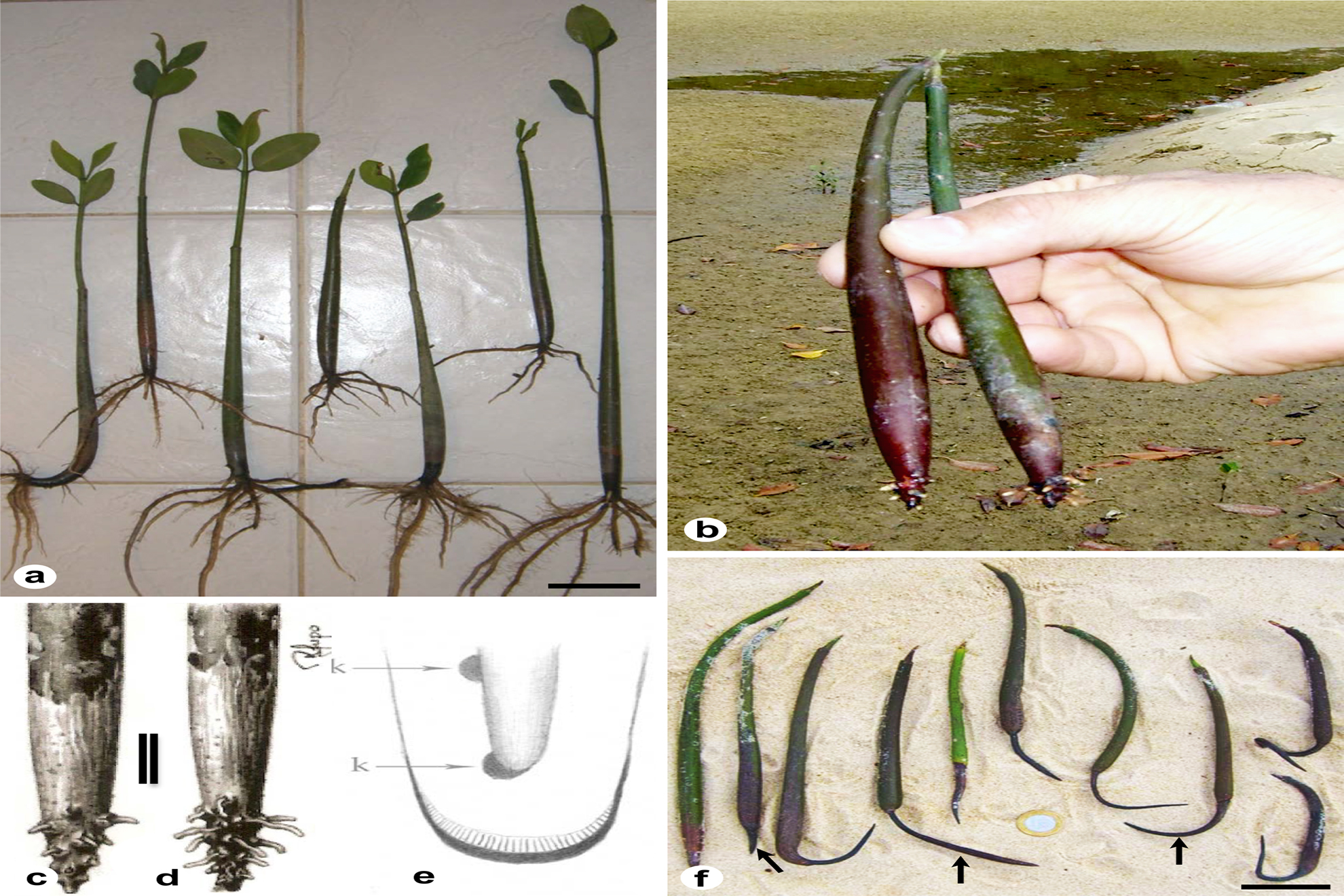Abstract: The authors of the 19th century had demonstrated the viviparity of the species Rhizophora mangle L. with the formation of propagules in the form of spears devoid a radicle, adapted self-planting in the soil of the mangrove or to leave floating in vertical during the high tide. With low tide the propagules self-planting or remain prostrate on the soil but later become upright later. When the seedlings are unearthed, those who are self-planting are straight from end to end; those that stood erect later show a curvature at the base in the form of J (J-shaped). Authors of the last 30 years have questioned the self-planting and accurately demonstrate how the prostrate propagules rise from the ground. It has been verified that the propagule is stem from end to end and does not present radicle, that is, under the plumale there is the hypocotyls without a root. All roots are adventitious, agreeing with 19th century researchers, not lateral roots as researchers of the present century have claimed. Propagules that return to the beach in Porto Seguro (BA) probably of another flowering period show an extra growth of the lower part, but this growth remains a stem rather than a root, demonstrating that there is no root, as 19th century researchers claimed.
Key words
propagule; Rhizophore; mangrove; plant viviparity

 Thumbnail
Thumbnail
 Thumbnail
Thumbnail
 Thumbnail
Thumbnail
 Thumbnail
Thumbnail



